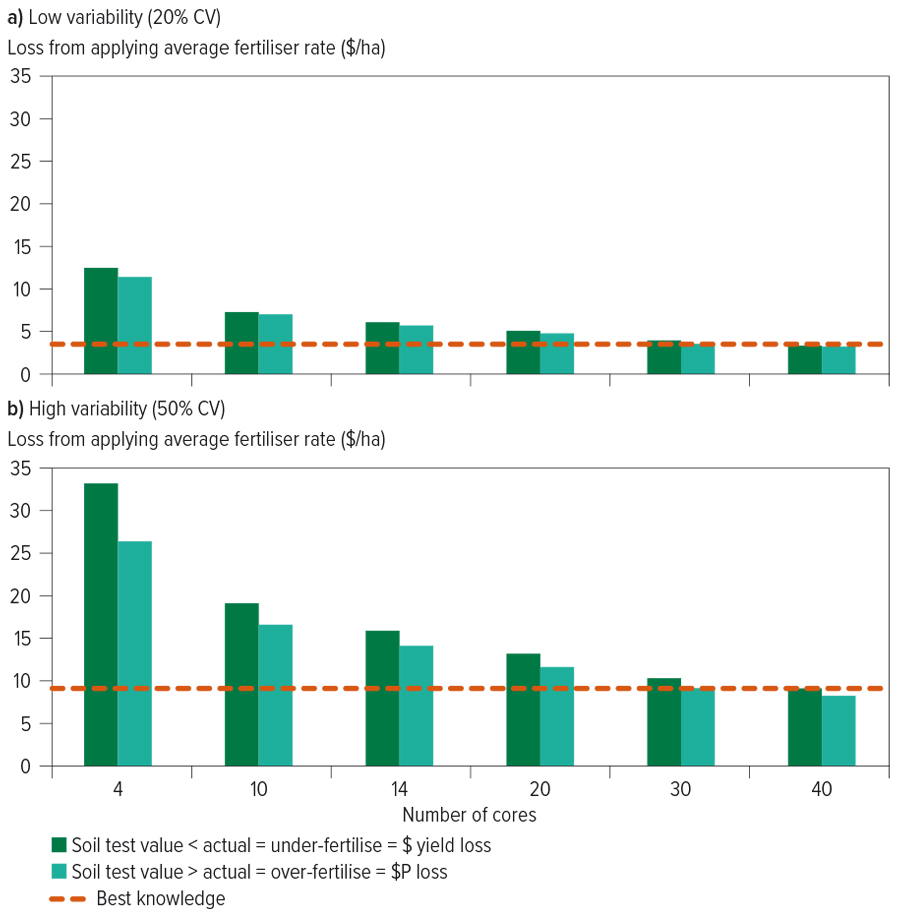Key message
- Due to customised management and amelioration practices, there is no one-size-fits-all approach to soil sampling in WA. Sampling strategy will be determined by inherent paddock variability and the purpose of sampling.
Determining an appropriate soil sampling strategy is challenging for Western Australia, given its soils are highly variable and, in places, might have been reconstructed using diverse amelioration techniques.
Dr Yvette Oliver, a senior research scientist at CSIRO, is addressing this issue. With GRDC investment, she is leading a multi-disciplinary team from the University of Western Australia, Murdoch University, CSBP Ltd, Summit Fertilizers and the Department of Primary Industries and Regional Development.
The research value-adds to a suite of nutrient projects, including focus paddocks, precision agriculture, Yield Prophet, subsoil constraints and soil water. It is another testament to the collaborative capabilities of the SoilsWest venture and will provide insights from a large dataset covering the variable WA soils and management practices.
“Specifically, we are focusing on sampling strategies that address the microspatial variation caused by previous crop row stubble, or application of nutrients in the crop row, as well as the soil-mixing processes of amelioration,” Dr Oliver says.
Growers need to keep their goal in mind when they are considering an appropriate soil sampling strategy and ask questions: How accurate do you need to be? Do you want to monitor trends over time or just have a point-in-time reference to assess the nutrient status?
This will determine how many cores are required to meet this accuracy, depending on the variability of the paddocks.
Western soils
Many WA soils suffer from one or more production constraints, including acidity, sodicity and poor soil structure; compaction and high soil strength; water repellence and low water holding capacity; and nutrient deficiency and stratification. This has driven the adoption of a wide range of amelioration techniques to reconstruct soils, using techniques including deep ripping, spading and mouldboard ploughs.
“This customised approach to soil reconstruction means there is no one-size-fits-all recommendation when it comes to soil sampling for WA,” Dr Oliver says.
Key lessons
Over or under-fertilising is an issue for highly variable soils and a carefully considered sampling strategy can help resolve this.
“For example, ff the soil test is returned with an average 10 milligrams per kilogram value for phosphorus, the actual value may be much higher or lower, as the range is determined by how variable the soils are across a paddock and how many samples were taken,” Dr Oliver says.
If fewer cores were taken, then the range of likely phosphorus values is high and the likely economic loss from over-fertilising or under-fertilising is also high (Figure 1a and 1b). If the variability is low (Figure 1a), then there is a similar chance of financial loss at taking 14 cores as there is at 40 cores. But if the variability is high (Figure 1b), then about 30 cores are required to reduce economic loss.
Figure 1: Loss ($/ha) from applying an average phosphorus fertiliser rate of 10 milligrams/kilogram across soils with phosphorus values lower or higher than the average test value. Calculation based on a paddock with (a) low soil variability (coefficient of variation (CV) of 20 per cent) or (b) high variability (CV of 50 per cent) across a range of bulked soil cores ranging from four to 40.

Source: CSIRO
There was no definable trend for difference in on-row and off-row nutrients, so sampling can remain random unless there is precision sowing.
Deeper nutrients to 30 to 40 centimetres are accessible by the crops. In many cases it was found that nitrate-nitrogen and potassium to 30cm, or phosphorus and sulfur to 20cm, can be estimated from the zero to 10cm test in WA soils and low-to-medium-rainfall farming systems.
More information: Dr Yvette Oliver, 08 9333 6469, yvette.oliver@csiro.au; SoilsWest.

























































